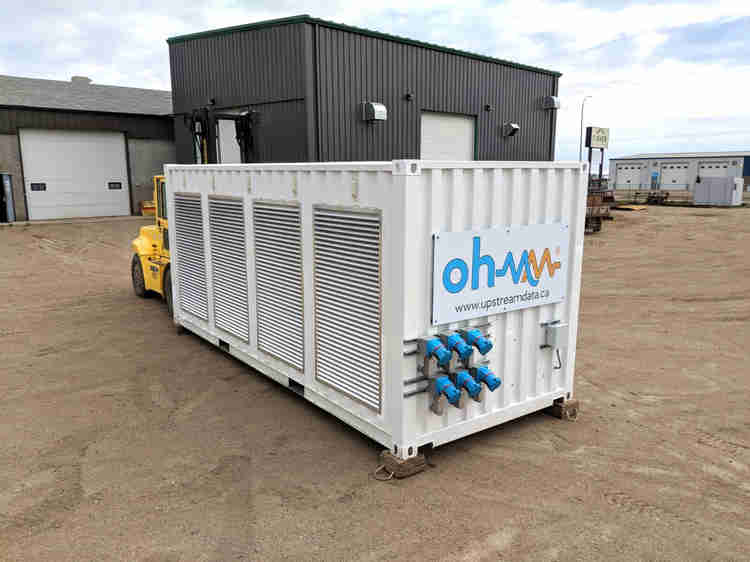The oversupply of natural gas from new completion techniques such as hydraulic fracking has driven prices down to the point where oil and gas producers are typically more inclined to waste it than risk getting it to market. Even longstanding natural gas producers have not been able to figure out how to produce their gas wells profitably, resulting in field-wide shut-ins. The ever increasing stranded gas well inventory in Canada is forcing the hands of producers who are increasingly moving towards large scale and costly well abandonment programs.
How bad is the stranded gas problem?
According to the Alberta government there are presently 90,000 inactive / stranded well licenses in Alberta. With abandonment costing anywhere between $60,000 – $80,000 per well on average, total liabilities currently represent somewhere between $5.4 – 7.2 billion dollars in clean-up liabilities just for the inactive upstream well bores in Alberta alone. This does not even account for reclamation costs of the surface land or the abandonment costs of the downstream pipelines and facilities. One source cites that inactive well counts will soon reach 180,000 in Alberta alone with net liabilities in many tens of billions of dollars.
Economically stranded

Producers cannot get their gas to market.
Failed exploration
Economically stranded gas wells are sometimes the result of unsuccessful exploratory drilling. Oil and gas companies searching for the next big oil play will spud new drills looking to book new oil reserves, but sometimes they miss and find a reservoir that is completely dry or only contains natural gas. In today’s pricing environment the producer is typically forced to leave new gas wells uncompleted and to abandon them, sinking capital permanently in a failed enterprise.
High operating cost
Producing gas wells generate revenue that offset the capital and operating cost associated with the effort required to bring the gas to market (compressors, pipelines, separators, refridge plants, treaters, labor, etc). In many cases the operating costs are simply too high to justify continuing to produce the well, so it ends up shut-in until economic conditions improve.
A shut-in gas well has fixed costs that must also be addressed, such as landowner rentals, licensing fees and local county taxes, to name a few. Not only do shut-in wells bleed the owner through these fixed costs, but most regulators also require some level of assurance that the well owner has the financial capability of properly abandoning the well in the future. In jurisdications such as Canada the producer is charged a levy and a security deposit to ensure the well does not become orphaned.
Orphaned wells
An orphaned well is a well that no longer has an owner as a result of producer bankruptcy. In Canada the Orphan Well Fund (OWF) exists as an initiative that preemptively requires producers to pay for orphan well liabilities via a regulator-enforced levy paid to the fund.
Not only do producers have to pay the levy but they may also have to submit a security deposit to ensure that the taxpayer is protected from having to foot the bill if they go bankrupt. Now this is all well and good but the reality is that the security deposit is money that is not generating a return for the producer, so this additional cost of doing business does not contribute to profits that are needed to pay for the inevitable clean up.
While I agree with the OWF initiative, the 90,000+ inactive wells in Alberta alone seems to indicate that there may be a systemic risk at play here. What if gas prices don’t improve? Will oil and gas producers be able to foot the bill or will continued bankruptcies and capital flight transfer the liability to tax paying citizens? Orphaned gas well in Alberta (credit www.cbc.ca)
The security deposits amounts are based on the producer’s Licensee Liability Ratio (LLR), a ratio calculated as a function of asset to liability value. Without getting into the nitty-gritty details, a producer’s LLR is based on both their yearly production rates from the well and the deemed liability costs to clean up the well.
What’s important for you to understand about the LLR is that when a gas well is producing it is generally deemed a net asset, in which case the producer does not end up having to contribute a security deposit. Since a security deposit is typically at least $45,000 for a single upstream gas well in Canada, it is critical that a producer keep producing the well and maintain a healthy LLR ratio to avoid having to cough up more capital.
Bitcoin to the rescue

Bitcoin offers a new option to stay afloat.
At the end of 2018 a small family-owned oil and gas producer in Texas reached out to me to explore the idea of mining bitcoin on their two stranded gas wells.
They had recently drilled two exploratory wells searching for oil, but only found gas in what their geologist described to me as a ‘reef’ formation. Being more mechanically minded I never did care enough to learn about the geological aspect of this industry, but I can tell you a reef is one particular way a fossil fuel bearing sand is formed, eons ago. When I quizzed him on the potential output of the wells he assured me that the natural gas reserves in place could power several megawatts worth of bitcoin mining load for a very long time.
Unfortunately for this small producer the nearest market tie-in point was several miles away, making for a costly capital expenditure for a pipeline that would never pay out at current natural gas prices. Their capital was effectively sunk had traditional gas conservation solutions been their only option.
So they were left with two choices: either abandon the sunk capital and cap the wells or try out this new, crazy bitcoin mining thing that we have been pioneering here at Upstream Data Inc since 2017!
After a few phone calls to scope out the project I learned that the amount of gas these wells could produce was rather substantial. Since they were new to bitcoin we opted to start with a small scale project – ‘dipping your toes’ as I often say – and I designed them a rather unique bitcoin mining datacenter to fit their needs.

Custom Ohmm bitcoin mining datacenter being prepared for shipment in our Lloydminster yard, July 2019.
The 300 kW Ohmm mining datacenter we designed would allow for up to 6x small 50 kW natural gas engines (which we also fabricate and sell) to plug into it, each on independent electrical systems. A control package maintains optimal fan speed and is responsible for emergency shut-downs. The entire package, gensets included, can even be controlled from a phone or laptop!
The idea behind this modular style package was that the oil company could minimize the upfront investment by only starting with a couple engines and ASIC miners (Antminer S9’s in this case) before investing more capital to fill out the rest of the datacenter’s capacity. Being that this was our first install in a warm Texas climate I also over-sized the fans to ensure maximum air flow through the datacenter to keep the ASICs cool all throughout the hottest summer days. Aside from a few ASICs overheating from defects, it seemingly has worked like a charm after it was commissioned in July, 2019.

An Ohmm bitcoin mining datacenter is monetizing natural gas from a stranded gas well located in central Texas.
A better option, a better future
Low gas prices today do not imply low gas prices tomorrow. While I applaud producers who proactively address their abandonment liabilities, it will be a damn shame if gas prices improve in the years to come and we end up wasting billions in capital capping productive assets that could end up heating homes, powering EV’s and providing jobs and other economic boons to Canadians and abroad.
With oil and gas demand increasing every year we should expect that at some point gas prices might just improve… especially if politicians and hypocritical activists get out of the way of pipelines and LNG projects (a huge problem here in Canada).There are no signs of oil and gas consumption slowing down.
Gas well owners can and should help themselves by considering an investment into bitcoin mining. While many shut-in gas wells will need to be abandoned and reclaimed anyway, there are plenty of low-rate wells that just have the unfortunate luck to be situated in a remote, high operating cost gas fields. Mining today on these gas sources could help producers pay off their abandonment costs in the future, relieving the liability burden on all producers and taxpayers. Bitcoin offers a more efficient path forward that traditional conservation solutions.
Final Word
“We are not in the business of mining bitcoin, we are in the business of producing oil and gas.”
I often hear this from across the table when I’m out pitching our products and services to oil and gas producers. Are producers only in the business of producing oil and gas or are they also in the business of producing money?
Bitcoin is the best money mankind has ever seen. I could write all day about why I believe this to be true, but sometimes people just need to come to understand it for themselves. And that takes time. The immediate question is whether or not producers can afford the status quo. I probably don’t need to hire a risk specialist to tell you the potential upside of distributed bitcoin mining may far outweigh any small capital risk of giving mining a shot.
New technologies bring new uncertainties. To the producers that remain uncertain about bitcoin mining, here’s what I say to you:
Dip your toes.
<3 Steve



